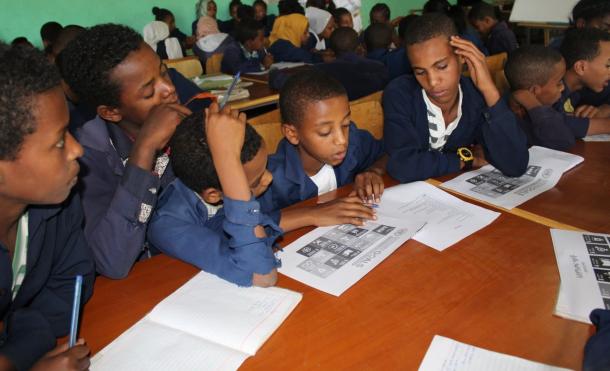Proficiency in Reading and Mathematics: Where Do We Stand in Africa?
By Quentin Wodon
March 27, 2024
Quentin Wodon is Director of the UNESCO International Institute for Capacity Building in Africa.

Last week, the UNESCO Institute for Statistics (UIS) released its Spring Data Refresh, increasing coverage for SDG indicators related to education and research and development. For education, as noted in a blog post by Silvia Montoya and Luis Crouch, some 112,000 new data points were added, of which three fourths relate to SDG indicators and one forth to policy indicators.
Most of the new data points are for education attainment (SDG indicator 4.4.3), followed by out-of-school rates and the tertiary education gross enrolment ratio. New data are also available for minimum proficiency level in reading and mathematics (4.1.1), over-age attendance rate (4.1.5), early childhood education participation rate (4.2.2), youth/adult literacy rate (4.6.2), and students taught in their home language (4.5.2), but for each of these indicators, the increase in coverage remains limited.
This short post has two objectives: first, to make readers of IICBA’s blog aware of the data available on SDG4 and how to access the data, and second, to briefly mention an important discussion that has taken place over the last week or two on monitoring proficiency in reading and mathematics.
SDG4 Monitoring Data
UIS has released a new data browser for SDG 4 data. The browser enables users to select data pertaining to (i) Indicators (available data for a selected SDG 4 indicator for all countries); (ii) Countries (data available for all SDG 4 indicators for a selected country); (iii) Data in Long Format (rows display the value of an indicator for a selected country, the year and the metadata); (iv) Country Profiles (all available data and the trend in all countries); and (v) Regional Averages (averages for different regional groupings for all indicators). By default, data are provided for the period 2013 to 2023, but this can be changed.
As is well known, sub-Saharan Africa lags other regions for many indicators, with limited progress over time. As an illustration, Figure 1 provides data for the region on proficiency in reading and mathematics in 2013 and 2019, the latest available data point. Especially at the end of primary education, only a small percentage of students are deemed proficient in reading and mathematics, and even fewer are prepared for the future in those areas. The definitions of the indicators are available in the dashboards as well as in a background document.

Coverage of Data
Another issue is the fact that coverage for many indicators remains too low, including in sub-Saharan Africa. Two of the SDG indicators with low coverage are Children developmentally on track (4.2.1) with data coverage at 35 percent, and functional literacy and numeracy proficiency with data coverage at only 7 percent. For proficiency in reading and mathematics, coverage depends on the level education considered. Coverage is higher at the end of primary and lower-secondary education, but still very low for grades with only one in five countries accounting for 16 percent of the population as data are based mostly on LLECE in Latin America (grade 3) and PASEC in francophone Africa (grade 2).
Lack of data have led to a reclassification of the indicator, with some commentators fearing that reclassification could be seen as a sign that measuring early grade literacy is not important, which is not the case. Questions were also asked about why three other existing assessments were not used to report on early literacy. These other assessments are the Early Grade Reading Assessment (EGRA), the Foundational Learning Module of the Multiple Indicators Cluster Survey (MICS), and the assessments from the People’s Action for Learning (PAL) Network.
If you are interested in a discussion of why these assessments are not used for global reporting, in response to comments among others from the Global Coalition for Foundational Learning, the Center for Global Development, the People’s Action for Learning (PAL) Network, and the Global Education Evidence Advisory Panel, two blog posts by Silvia Montoya and Manos Antoninis provide answers. On the way forward, Antoninis and Montoya suggest to (i) strengthen financing for cross-national assessment programs; (ii) build as an additional option on the Assessments for Minimum Proficiency Levels (AMPL) tool; and (iii) shift the assessment market from a donor-driven to a country-driven approach.
IICBA’s Work
IICBA does not work on producing or validating student assessment data, but we use the data for our research and policy advice. As an example, we recently received a grant from the Bill and Melinda Gates Foundation for new analysis of PASEC data and a related review of what works in teacher professional development pre-service and in-service. We hope to share results from this work in coming months.

